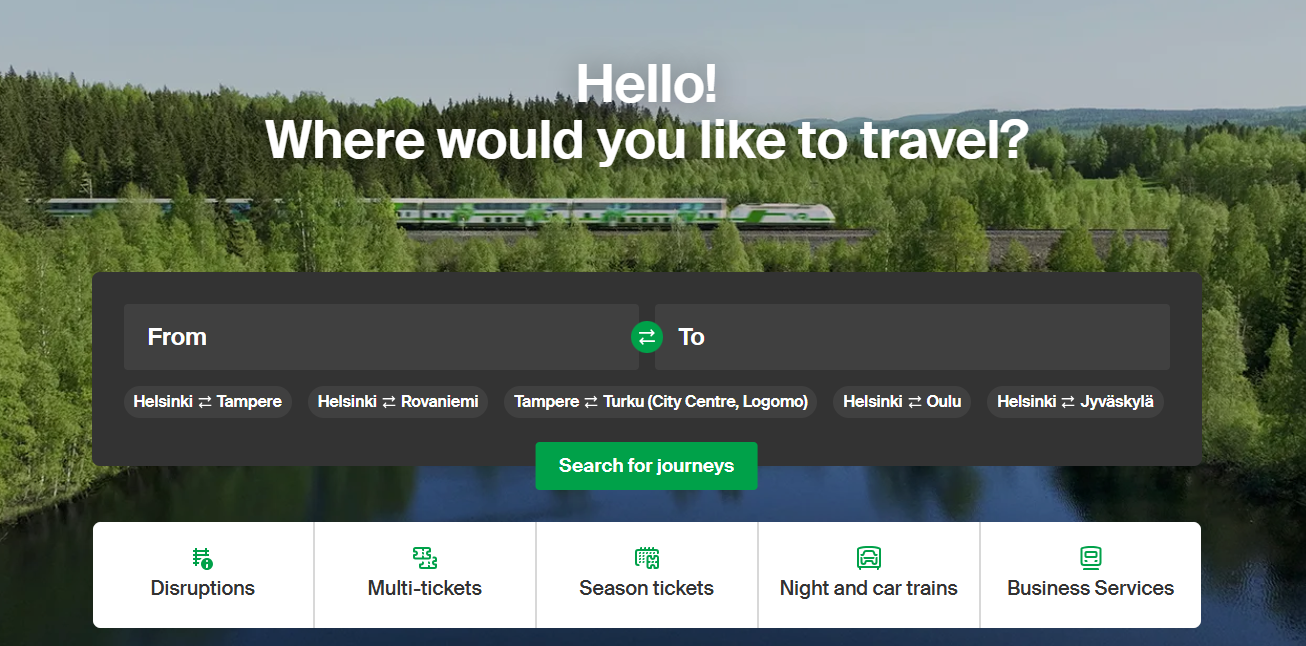Traveling around Lapland in the winter might sound challenging, but with the right planning, it’s easier than you think. Whether you’re heading to see the Northern Lights, visiting Santa Claus Village, or enjoying a ski trip, public transport can take you where you need to go without the stress of driving in icy conditions.
This guide covers the main ways to get around, insider tips for winter travel, and what to expect during your Lapland adventure.
Why Public Transport Works Well in Lapland
Even though Lapland is in the far north and experiences long, harsh winters, Finland’s public transport system runs reliably throughout the season. Trains are heated and comfortable, buses are equipped with snow tires with metal studs for extra grip, and roads are cleared regularly even during heavy snowfall.
Drivers are trained to handle icy conditions, and schedules are maintained as much as possible despite the weather. This makes it possible to travel between towns.
It might take a little longer than driving yourself, but public transport is safe because vehicles are built for Arctic conditions. It is scenic because you can enjoy the snowy views without worrying about the road. This option is also eco-friendly because it produces lower emissions compared to renting a car.
It might take a little longer than driving yourself, but public transport is:
- Safe: Vehicles are built for Arctic conditions.
- Scenic: You’ll enjoy the snowy views without worrying about the road.
- Eco-friendly: Lower emissions compared to renting a car.
Public Transport Options in Lapland
When it comes to public transport, there are different options available in Lapland. Here are some of the best ones:
1. Trains – Cozy and Scenic
If you’re coming from southern Finland, take the Santa Claus Express overnight train from Helsinki to Rovaniemi. It has comfortable sleeper cabins, some with private showers. It’s a relaxed way to arrive in Lapland and wake up to snow-covered landscapes.
If you’re traveling further north, trains run to Kolari, Lapland’s northernmost station. From there, buses connect to resorts like Levi, Ylläs, and Muonio.

2. Long-Distance Buses – Connecting the Region
Buses are the main way to travel between Lapland’s towns and villages. Some famous companies, such as Matkahuolto, Onnibus, and Eskelisen Lapinlinjat, run services between major hubs and remote destinations, including ski resorts and national parks.

Some routes are very scenic. They pass frozen forests, icy rivers, and tiny Arctic villages.
3. Local Buses in Rovaniemi
Rovaniemi is compact enough to walk around, but buses make things easier in the snow.
Here are some options you can pick the local buses for travelling.
- Route 8 takes you to Santa Claus Village.
- The Santa’s Express and Airport Express run during the peak winter season.
You can check timetables and buy tickets using the Waltti Mobile app.

4. Unique Winter Transport
In some areas, transport becomes part of the adventure. Frozen landscapes turn into natural highways, and traditional travel methods blend with modern thrills. Whether powered by animals or engines, each option offers its own charm.
- Reindeer sleighs
- Husky sleds
- Snowmobiles
- Ice roads (over frozen lakes)
These are mostly tourist activities rather than daily transport, but they’re unforgettable experiences.
Tips for Using Public Transport in Lapland Winter
Using public transport in Lapland for winter travel is easy. Still, here are some important tips that can make it even easier:
1. Plan Ahead
Buses and trains may only run once or twice a day on certain routes. Check schedules early, especially if you’re going to smaller towns. Planning ahead helps you avoid long waits and ensures you don’t miss important connections.
2. Arrive Early
You should arrive early to get to your stop at least 10–15 minutes before departure. If you miss your bus or train, you may have to wait hours for the next one. Getting there ahead of time also lets you settle in without rushing through snow or ice.
3. Buy Tickets in Advance
Try to book tickets online through Matkahuolto, VR, or Onnibus. This guarantees a seat and can sometimes be cheaper. An early purchase also means one less thing to worry about on travel day.
4. Dress for Arctic Weather
Winter temperatures in Lapland can drop to –30°C. Wear warm layers, waterproof boots, gloves, and carry hand warmers, especially if you’ll be waiting outside. Proper clothing can turn a freezing wait into a comfortable pause between adventures.
5. Allow Extra Time
Even with Finland’s excellent transport, snowstorms can cause delays. Keep a buffer in your schedule. This is especially important if you have connecting trains, flights, or tours booked.
6. Use Apps
Using apps like Waltti Mobile, VR, and Matkahuolto can be helpful. These apps are designed to make planning and navigating public transport in Lapland much simpler. You can use them to check real-time schedules and buy tickets easily.
7. Be Flexible
If public transport doesn’t fit your plans, consider renting a winter-ready car or arranging a taxi through your hotel. Having a backup plan ensures your trip keeps moving, no matter the conditions.
Public Transport vs Renting a Car in Lapland
| Feature | Public Transport | Renting a Car |
| Cost | Lower and predictable | Higher (rental + fuel + insurance) |
| Flexibility | Fixed schedules | Go anywhere, anytime |
| Convenience | No driving on icy roads | More effort but direct routes |
| Experience | Relax and enjoy the views | Access very remote spots |
Final Thoughts
Traveling around Lapland in winter doesn’t have to be stressful or complicated. Thanks to Finland’s well-maintained public transport to view the places, you can get to most towns, attractions, and even remote spots without driving on icy roads yourself.
Whether you choose a warm train ride, a scenic bus journey, or a unique winter experience like a husky sled, getting around can be part of the adventure.
With a bit of planning, warm clothing, and some flexibility for the weather, you’ll be able to explore safely, enjoy the views, and make the most of your time in the Arctic.
People Also Ask:
Can I rely on public transport in Lapland during winter?
Yes. Trains and buses in Lapland are designed for Arctic conditions and run reliably even in heavy snow.
How far in advance should I book my tickets?
It’s best to book online a few days ahead, especially during the peak winter season, to guarantee a seat and sometimes get a lower price.
Are buses and trains heated in Lapland?
Yes. All public transport vehicles are heated, making travel comfortable even in sub-zero temperatures.
What if my bus or train is delayed due to the weather?
Snowstorms can cause delays. So, allow extra time in your schedule, especially if you have connecting travel plans.
Can I use public transport to reach remote ski resorts or national parks?
In most cases, yes. Buses connect major towns with resorts and national parks, though some very remote areas may require a taxi or car rental.






